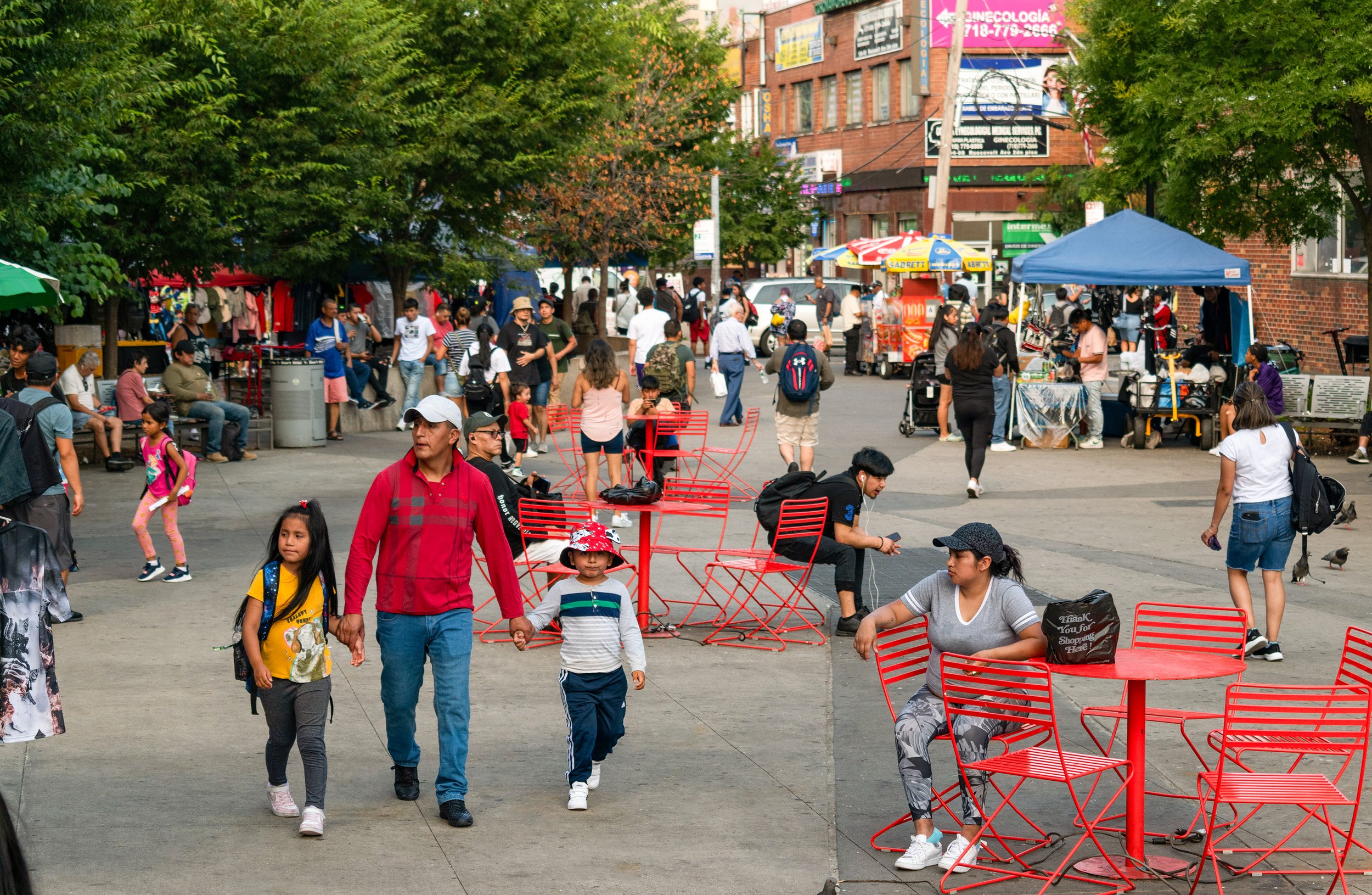
A Framework for the Future
Local public spaces are vital to city life. They are where neighbors mingle, children play, and New Yorkers are afforded moments of relaxation, joy, and community. Yet, New York City’s few plazas and Open Streets are the exception to the rule of car-dominated streets, and even these exceptions lack a cohesive framework through which they are managed and cared for. Without that framework, well-managed public spaces will never be an expected, integral part of our city landscape. This narrow approach costs us dearly: we forfeit the proven economic boosts of public space, thousands of potential jobs, and the chance for more vibrant neighborhoods that are welcoming, green, and safe.
It doesn’t have to be this way. Framework for the Future outlines a first for New York City: a true framework for managing public space. Through its three pillars, Stewardship, Community Coordination, and Facilitation, we can understand the vital role of effective public space management, as well as the challenges we face under the current system. The City has made progress — an expansion of the pedestrian realm, more support for under-resourced communities through the Public Space Equity Program, Open Streets, Open Restaurants, the appointment of the Chief Public Realm Officer, school streets. But this progress lacks a wider framework through which to view management and relies too heavily on volunteers and residents to manage their own spaces.
These recommendations create a practical framework for public space management. Our approach relies on the creation of, and investment in, a Public Space Team for every Community District in New York City to provide neighborhoods the resources, opportunities, and attention they deserve. This would be paired with administrative reforms to cut red tape and shift the City’s approach to public space to explicitly include ongoing local management. With vision and political will, we can create equitable, safe, and people-centered public spaces for all New Yorkers.
Why Invest in Public Space Management?
At the most basic level, public space management is necessary to allow public spaces to function to their fullest potential.
A cohesive public space framework would create thousands of reliable jobs — many entry-level — and provide a massive boost to our local economies and small businesses.
Quality public space management increases public and street safety, mitigates the effects of climate change, and fosters health and well-being for residents.
Well-managed public spaces result in vibrant communities, and meaningful public engagement and transparency makes it easier for residents to access and understand their government.
Robust public space management facilitates joy in our neighborhoods and produces a world class city we continue to be truly proud of.
Recommendations
-
This team would manage and create public spaces with input from residents, ensuring that high quality public space is distributed equitably across the city. This revolutionary investment in public space management for every neighborhood in the city can be accomplished for less than 0.3% of the City budget.
-
Create a new position of Deputy Commissioner for Public Space Management & Creation at the Department of Transportation, formalize and build out the role of the Chief of Public Realm Officer, and coordinate a shift in all relevant agencies towards local public space projects to provide the necessary administrative infrastructure to carry out public space management.
-
Existing, trusted public space partners deserve to be treated as true partners rather than just another entity that provides services to the city; making processes for permitting and insurance simpler helps this goal while making it easier for new partners to active public space.


